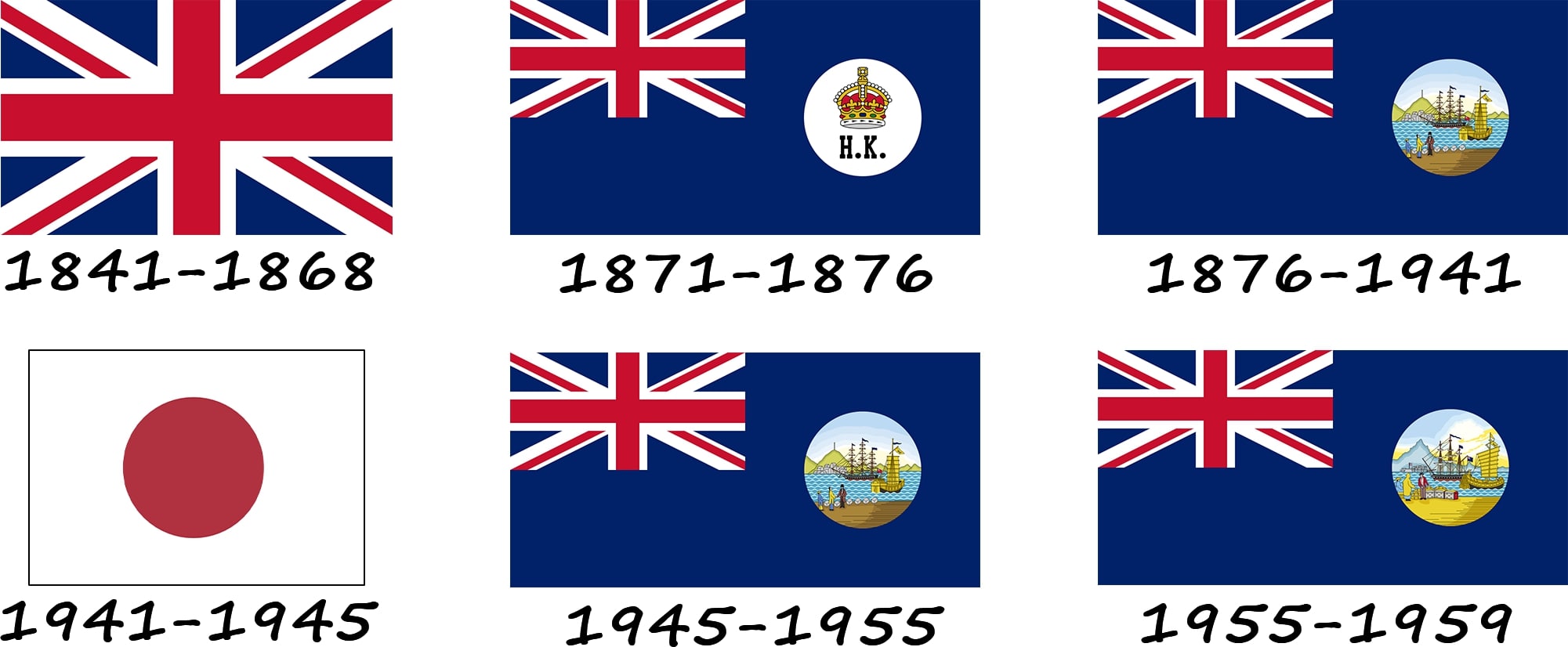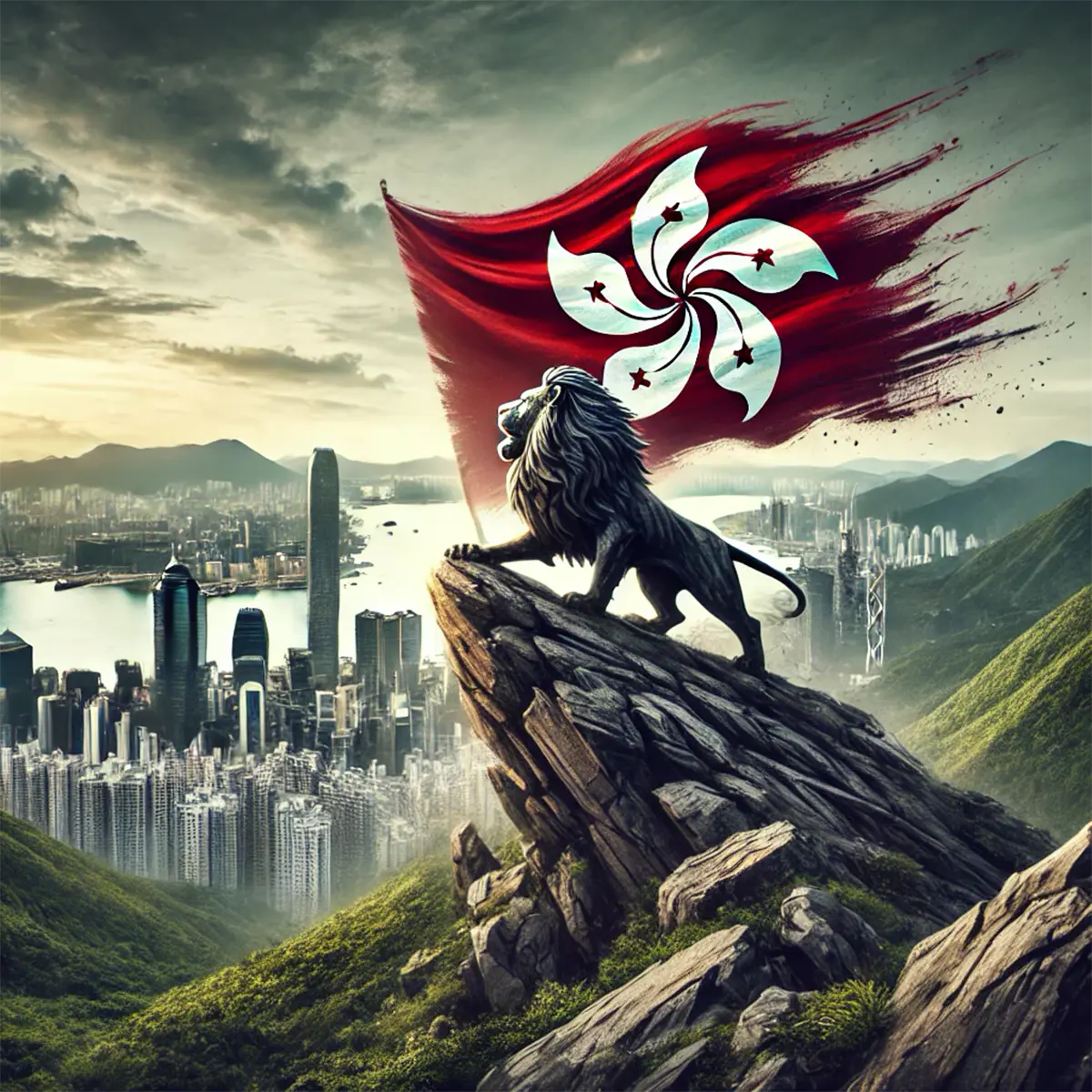Shortly after the occupation of Hong Kong Island in 1841, British colonists raised the Union Jack flag of the United Kingdom. In 1843, a colonial government was established, and the image of the coat of arms later appeared on the flag adopted in 1876. From 1871 to 1876, a blue flag with a royal crown and the inscription "H.K." was used.

During the Japanese colonization of Hong Kong in 1941-1945, the Japanese way of life was forcibly introduced, eradicating many elements of Chinese and British culture. At this time, Hong Kong's identity was suppressed and all British and Chinese flags were banned. At the same time, propaganda posters appeared proclaiming the Japanese flag as the national flag of Hong Kong.
Between 1876 and 1959, during the rule of the British Empire, the Hong Kong flag featured a map on a blue background in addition to the Union Jack. At the bottom of the map is the northern shore of Hong Kong Island, which shows boxes of goods. On the opposite side is Victoria Harbor with a Chinese sailing ship flying a yellow dragon flag and a British merchant ship flying a red flag, and in the distance is a group of mountains symbolizing the Kowloon Peninsula. The painting depicts two Chinese merchants negotiating with a British merchant.

What does the Hong Kong coat of arms look like and what does it mean?
In 1959, the map was replaced by the Hong Kong coat of arms, which was used until 1997. The lower part of the coat of arms depicts a green island surrounded by waves with the inscription "HONG KONG" in English. Above the inscription is the main element of the coat of arms - a shield, which is conventionally divided into two parts: the upper part is red with a golden crown, symbolizing the connection of the Royal Navy and the merchant navy with Hong Kong, and the lower part is white, with waves and two Chinese sailboats (there are red, yellow, grayish-blue and other colors), reflecting the importance of maritime trade in the early days of Hong Kong. The dividing line in the form of a wall between white and red colors recalls the Battle of Hong Kong in 1941 during the defense against the Japanese invasion. To the left of the shield is a lion in a crown, and to the right is a dragon. The lion represents the United Kingdom and the dragon symbolizes Hong Kong's Chinese culture. Together they signify that Hong Kong is the place where East meets West. Above the shield is a lion in a crown holding a pearl in both paws, representing Hong Kong as the "Pearl of the Orient".

From 1960 to 1999, the flag of the City Council was used with a purple background and a bauhinia pattern. The ratio of the horizontal and vertical sides of the Hong Kong City Council flag is 1:2, and the white bauhinia symbolizes holiness, honor and love, and means that Hong Kong, China and the Pacific region live together in peace and friendship. And the tightly and orderly folded petals symbolize the unity and mutual assistance of Hong Kong residents.
In 1987-1988, the Hong Kong government held a competition to choose a flag for post-colonial Hong Kong. Many designs were submitted, but many of them were rejected. The government of the People's Republic of China asked Tao He and two other jury members to submit a new design. Tao He proposed to incorporate the bauhinia motif into the flag design, referring to its symmetry and dynamism. This design was approved on April 4, 1990, and the flag was first hoisted on July 1, 1997, during the transfer of sovereignty, along with the five-star red flag of the People's Republic of China.








